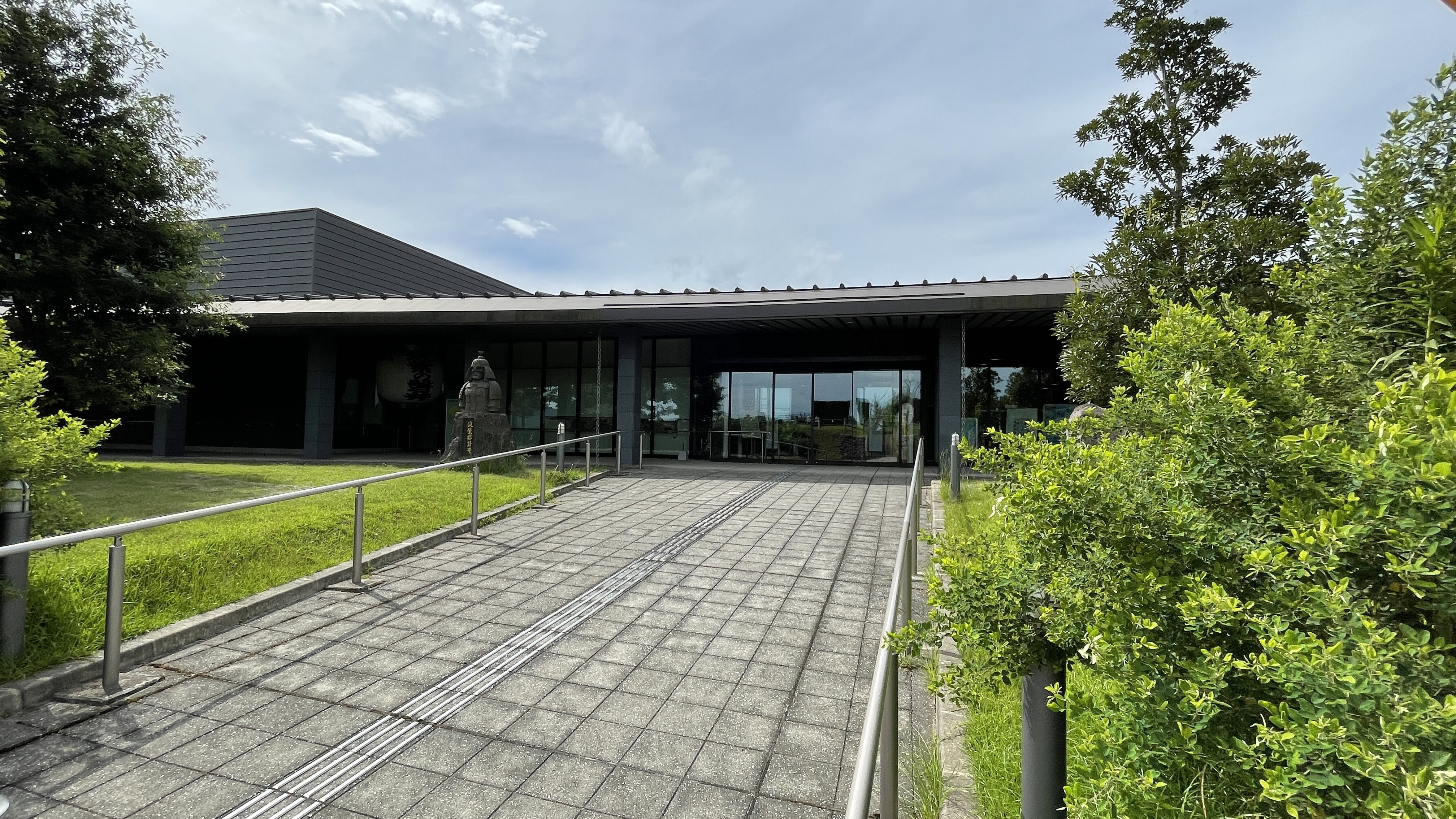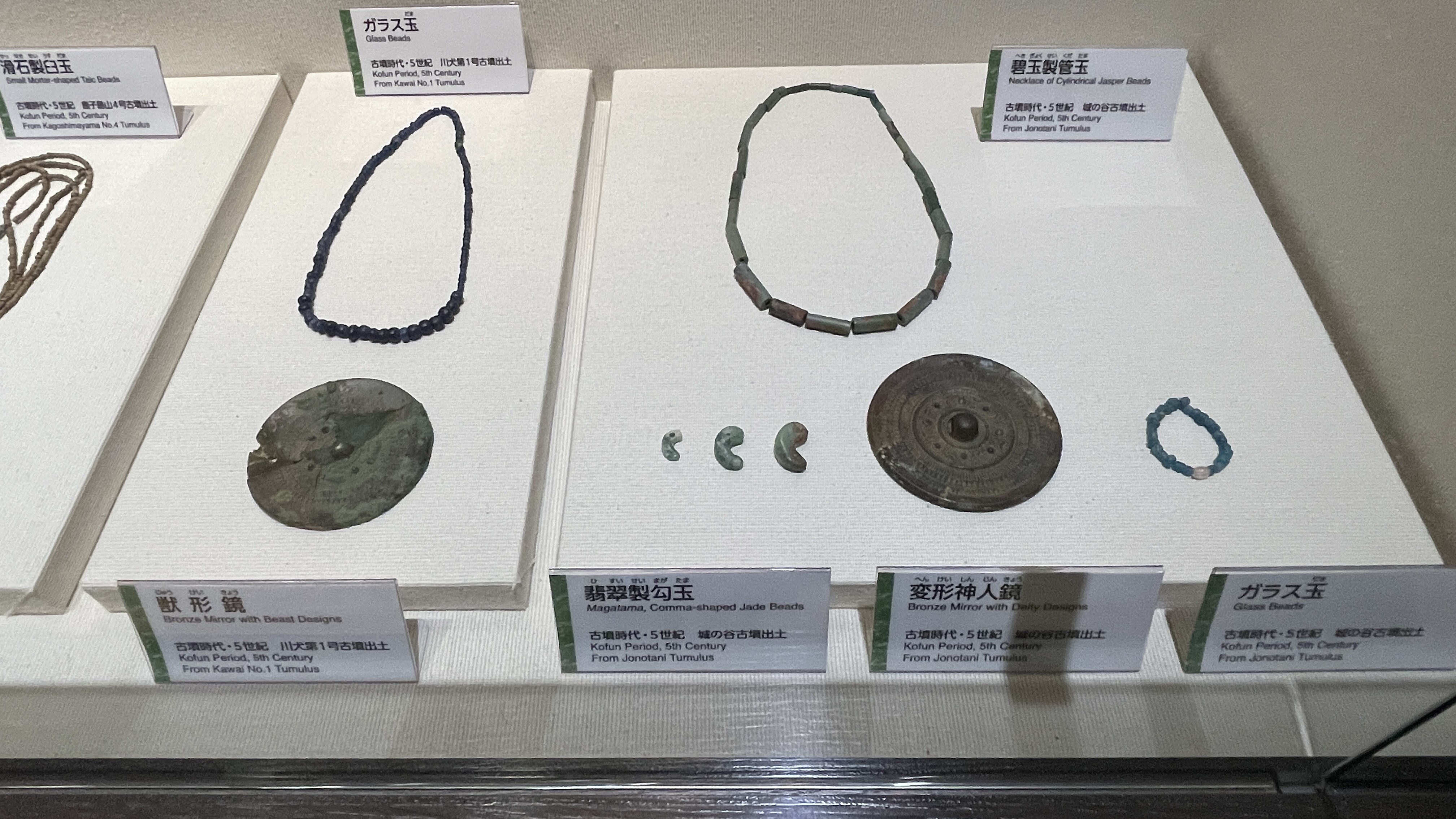memo12-40-08
MUSEUM
FUKUOKA
Iwatoyama History and Culture Exchange Centre
If you want to see the image at full size,
save it and see it.
(Confirmed with google chrome)
![]()
Visit date - 07/22/2021
------------- 12/01/2018
Edit date - 09/09/2021

"Iwatoyama History and Culture Exchange Centre" is a history museum.
This museum is mainly introducing the "Chikushi no Iwai Rebellion".
"Chikushi no Iwai Rebellion" refers to the war between the Chikushi no Iwai army and the Yamato Kingship army that took place in 527.
"Chikushi no Iwai Rebellion" was masterminded by Chikushi no Iwai, who was based in what is now Yame City, Fukuoka Prefecture.
Chikushi no Iwai was killed in action in "Chikushi no Iwai Rebellion".
The tomb of Chikushi no Iwai is said to be Iwatoyama Tumulus in present-day Yame City, Fukuoka Prefecture.
"Iwatoyama History and Culture Exchange Centre" was built next to the Iwatoyama Tumulus.
The next photo shows "Iwatoyama History and Culture Exchange Centre".
This statue is "Chikushi no Iwai".
The following photos show the exhibition rooms of "Iwatoyama History and Culture Exchange Centre".


(Trace Back to Ancient Times)
In prehistoric times, the people of Yame lived mainly by hunting and gathering.
About 3,500 years ago (Yayoi period), the people of Yame began to cultivate rice, established small villages, and began to lead a stable life.
Eventually, a disparity in wealth arises among the people living in the village, and a position of leader is created within the village.
In addition, a chief of great power emerged among the leaders of each settlement, who would be buried with a lavish secondary burial when the leader died.
About 2,000 years ago, large settlements occurred in various parts of northern Kyushu.
These large settlements were Nakoku in present-day Kasuga City, Fukuoka Prefecture, Itokoku in Itoshima City, and a large moat encircling settlement in Yame City.
A view of a village in the Yayoi period.
Moat encircling settlement of the Yayoi period.
The rise of the Iwai clan.



In the early 5th century, there were several settlements in the vicinity of present-day Yame City, Fukuoka Prefecture.
When the leader of this community group died, he was buried in his own circular tomb with his burial accessories.
The Iwai clan is said to be representative of these leaders.
Burials in Northern Kyushu.
Burials in northern Kyushu are characterized by stone statues of people and horses. In addition, bronze swords and mirrors are also buried.
The area where these are buried is the area of influence of the Iwai clan.
The Iwai clan begins to gain power.

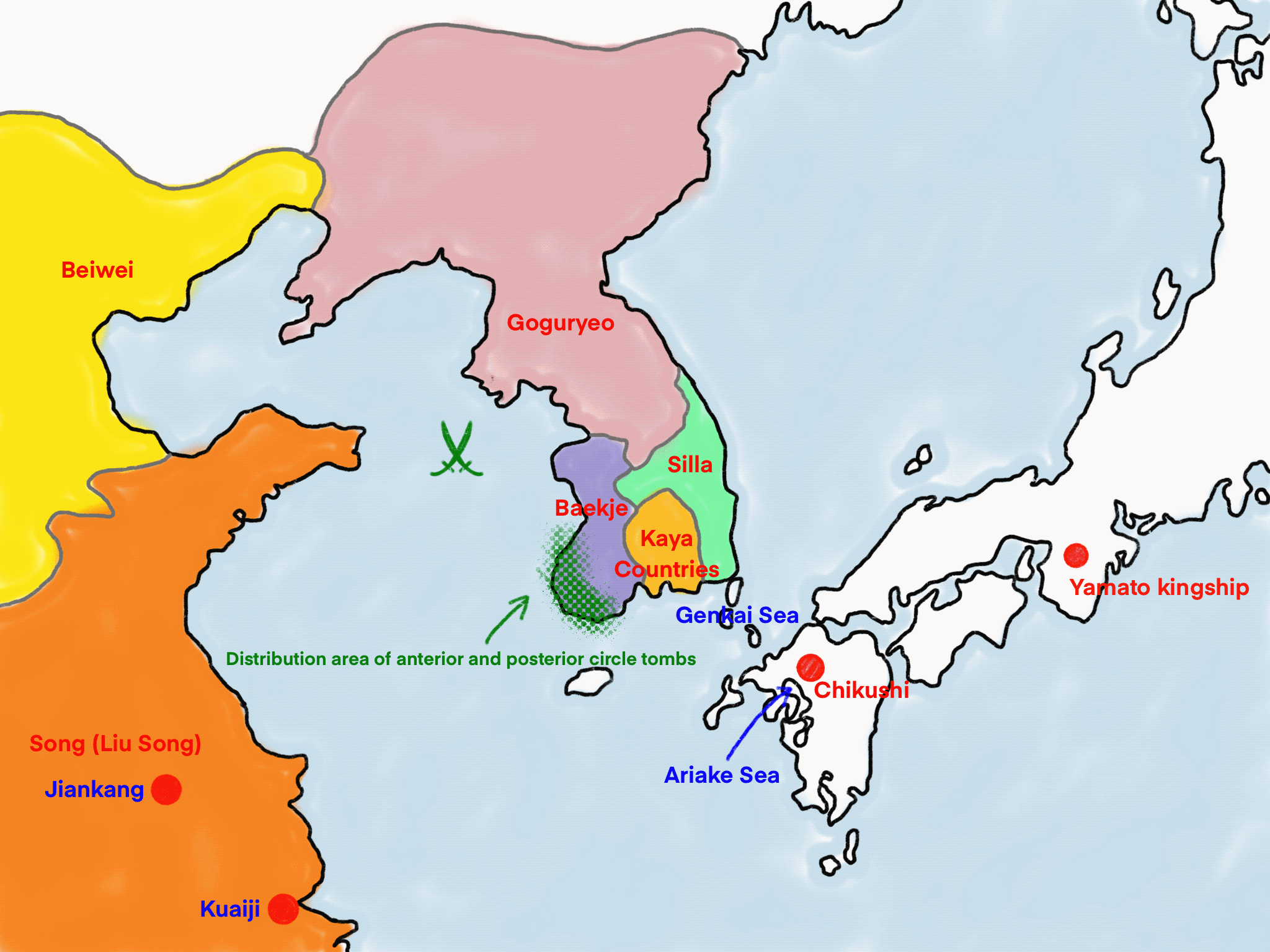
In ancient times, the travel route between Japan and China was via the Genkai Sea.
In the middle of the 5th century, the war between Goguryeo and Baekje partially blocked the passage from the Genkai Sea to the continent.
This is why the Ariake Sea has become so important.
It is said that Chikushi no Iwai was already in control of the Ariake Sea, which gave him even greater power.
The Iwai clan becomes affiliated with the Yamato kingship.
The Yamato kingship started out as a settlement of similar size to other local powers.
However, the Yamato kingship gradually expanded its sphere of influence, and the Iwai clan became affiliated with the Yamato kingship.
The Iwai clan was given the title "Chikushi no Kimi" by the Yamato kingship, and was given the government position of "Kuni no Miyatsuko".
And the Iwai clan was to tax the Yamato kingship.
When the Yamato kingship goes to war, the Iwai clan may also provide forces and supplies.
If the Iwai clan goes to war, the Iwai clan can also urge the Yamato kingship for forces and supplies.
When the Iwai clan joined the Yamato kingship, there was no sense of "Wa (Japan)" among the local authorities.
Therefore, the relationship between the Iwai clan and the Yamato kingship was something that could easily be lost depending on the situation in the world.
Korean Peninsula The Struggle for Supremacy
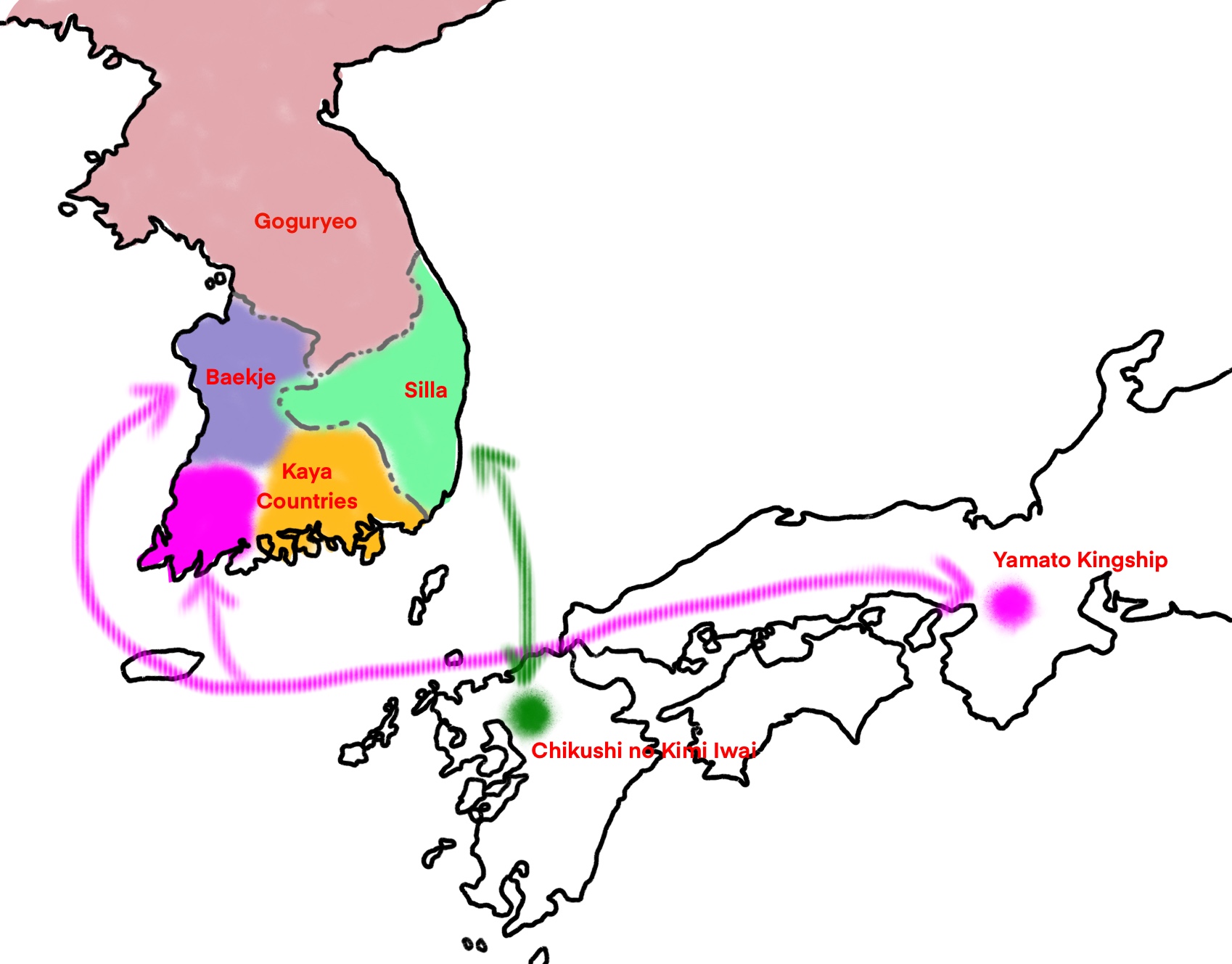

The Korean Peninsula in the 6th century was a time of turmoil as people fought for supremacy over the peninsula.
Until then, the Yamato kingship had obtained continental culture, information, and iron from Baekje.
The Yamato Kingdom also established the Japanese Minama Govemment in the Kaya Countries to obtain iron.
For this reason, the Yamato Kingdom provided the Baekje with forces and supplies, and secured a route to obtain iron.
The Iwai clan also had diplomatic relations with Silla before they became affiliated with the Yamato kingship.
The Iwai clan became affiliated with the Yamato kingship, maintaining diplomatic relations with Silla.
In this way, the management of the Yamato kingship is still loose, and the local authorities under its umbrella have not yet lost their sense of being a single nation.
"The Chikushi no Iwai Rebellion" broke out.


The Yamato kingship had routinely urged the Iwai clan to send troops and supplies to support Baekje.
And as the Yamato kingship gradually grew in power, the system of control over the provinces became stronger.
As a result, the Iwai clan was gradually becoming dissatisfied with the Yamato kingship.
Then word came that the Japanese Minama Govemment was being attacked by Silla, and the Yamato kingship ordered the Iwai clan to come to their aid.
However, Silla had asked the Iwai clan to interfere with the military actions of the Yamato kingship.
As a result, in 527, the Iwai clan, together with Hi no Kuni and Toyo no Kuni, waged war against the Yamato kingship.
This was the largest domestic war in ancient times, later known as the Chikushi no Iwai Rebellion.
This war was won by the Yamato kingship.
After "Chikushi no Iwai Rebellion".


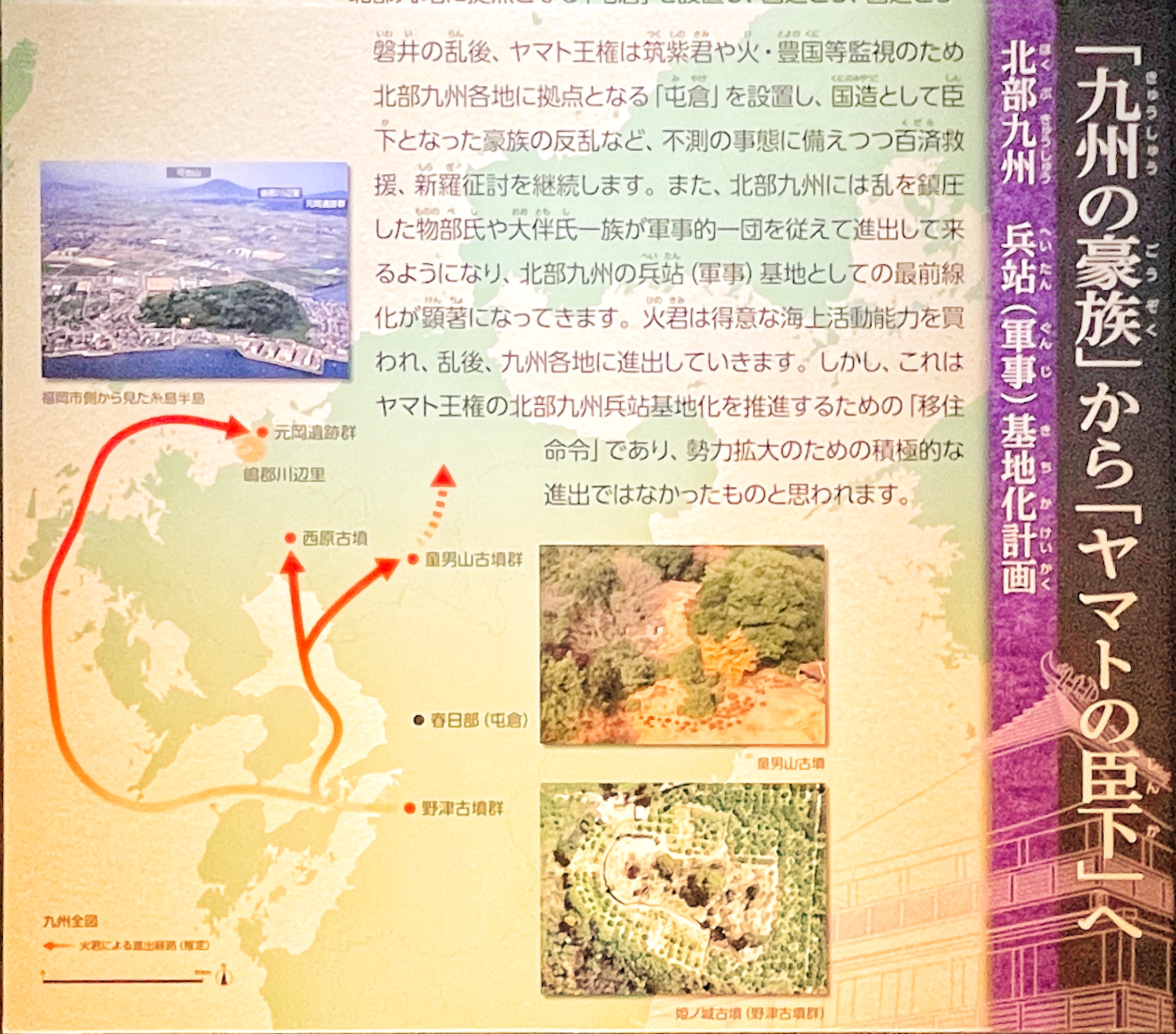

Iwai was killed in a war called "Chikushi no Iwai Rebellion".
Iwai's son, Kuzuko, has taken over Iwai's position.
Kuzuko first transferred part of their territory to the Yamato kingship in order to spare the Kuzuko clan from punishment.
The Yamato kingship built a facility called "Miyake" in its territory to administer the local powers.
With this, northern Kyushu became completely under the control of the Yamato Kingship.
Here is a page that introduces "Miyake".
Next is a panel describing the situation of Yame during the Northern and Southern Dynasties in the 14th century.
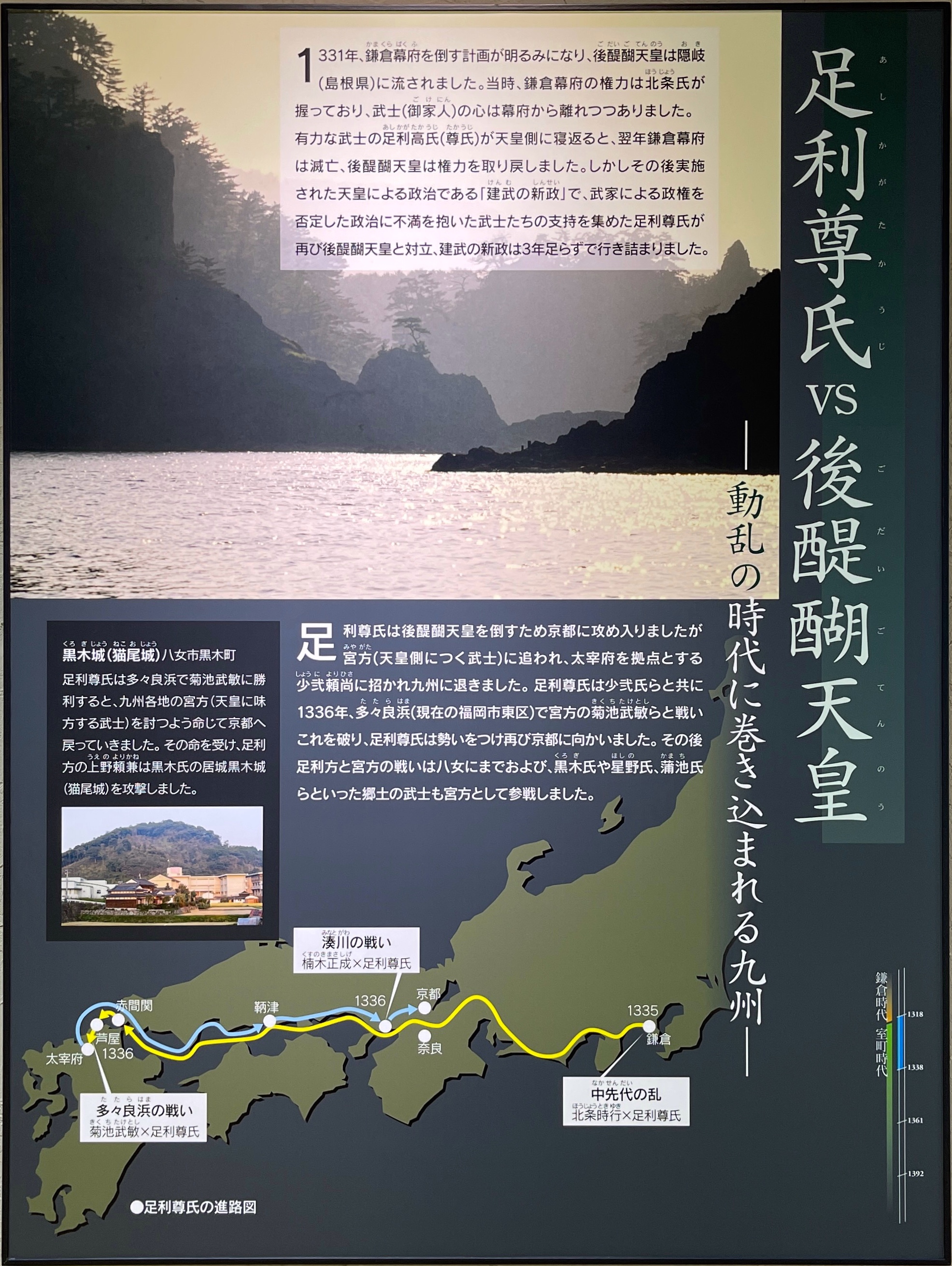



---------+---------+---------+---------+---------+---------
Iwatoyama History and Culture Exchange Centre
1562-1 Yoshida,Yame-shi,Fukuoka-ken
834-0006 Japan
Home Page : https://www.city.yame.fukuoka.jp/iwatoyama/
TEL : +81-943-24-3200
#Japan
#Japanese
#Travel
#Sightseeing
#tourism
#garden
#Museums
#scenery
#Landscape
#shrine
#temple
#church
#castle
#
#view
#historical facilities
#shrinesandtemples
#日本
#観光
#旅行
#日本庭園
#博物館
#神社
#寺
#景観
#城
#教会
#Kyu-Kurauchi-Tei
#KyuKurauchiTei
#kyukurauchitei
#旧藏内邸
#旧蔵内邸
#FormerResidenceofDen-EmonIto
#旧伊藤伝右衛門邸
#菅公歴史館
#Kanko Historical Museum
#Kanko
#岩戸山
#iwatoyama
#いわいの郷
#iwainogo
#筑紫
#chikushi
#tsukushi
#筑紫君
#chikushinokimi
#磐井
#iwai
#筑紫君磐井
#chikushinokimiiwai
#tsukushinokimiiwai
#八女
#yame
#yamecity
#弥生
#yayoi
#立山山遺跡
#縄文
#jhomon
#玄界灘
#genkaisea
#立野
#大坪
#宿町
#亀ノ甲
#須玖
#岡本
#奴国
#nakoku
#三雲
#井原
#伊都国
#itokoku
#室岡
#古墳
#kofun
#茶ノ木ノ元
#石棺墓
#甕棺墓
#銅鏡
#銅剣
#舶来品
#野田
#土壙墓
#鉾
#青銅器
#西山ノ上
#竪穴住居
#鍛治工房
#北山今小路
#石英斑岩
#銅鉾
#磐井の乱
#雄略
#倭王武
#有明海
#ariakesea
#高句麗
#goguryeo
#百済
#baekje
#新羅
#silla
#伽耶
#kaya
#任那
#mimana
#倭
#ヤマト
#大和
#yamato
#北魏
#beiwai
#宋
#song
#建康
#jiankang
#会稽
#kuaiji
#石人
#石馬
#埴輪
#勾玉
#副葬品
#朝鮮半島
#葛子
#糟屋
#屯倉
#miyake
#那津官家
#natsumiyake
#土師器
#須恵器
#土笛
#足利尊氏
#後醍醐
#南北朝
#
#
#
#
#
#
#
#
